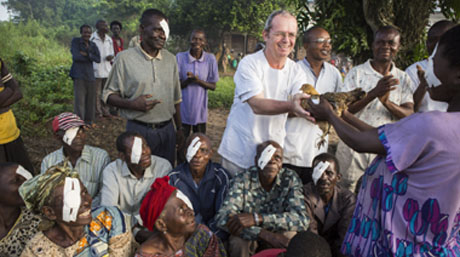The dry season has arrived and we're on the move again; this time our destination is Lubunga and its neighbourhood. We started off into the unknown at the encouragement of our healthcare colleagues, because according to them there are lots of patients there. Yes, but how will we find the place? Even the most detailed county maps available in the Congo do not show Lubunga; no road, no village, no forests are indicated where it is supposed to be. Yet allegedly it is a very densely populated, medically extremely neglected area; as it is located on the banks of a river, it counts as region affected by river blindness. Well, that is the kind of country the Congo is. Not even the authorities really know how many inhabitants there are in certain places. So we are setting out into the unknown. I don’t know where we will be staying there, what sort of a hospital we will be working in, where we will examine the patients…
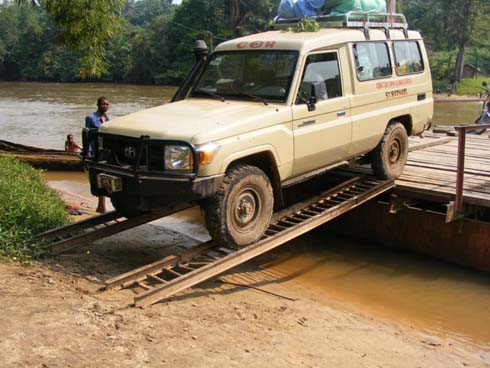
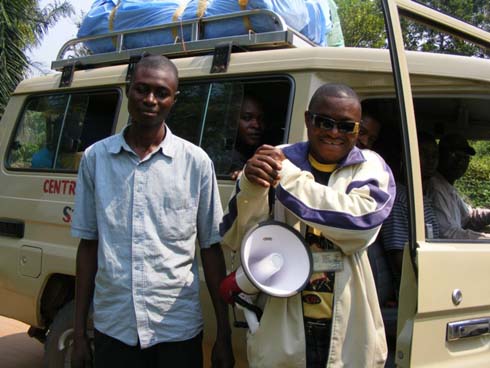
Four of us left from Mbuji-Mayi and later on Papa Gilles joined us, as well as four or five helpers from the township of Lusambo, who know the area very well.
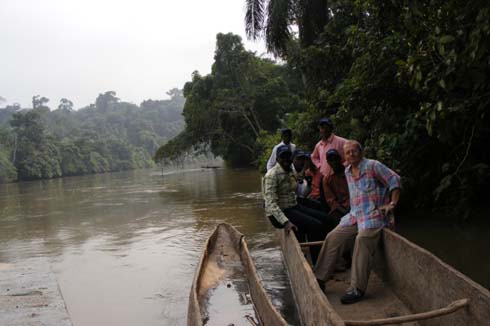
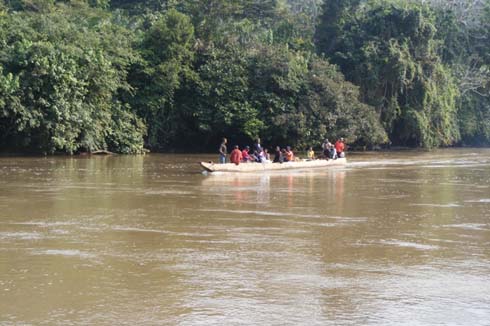
We were told over the phone to go to a village called Mutombo where we would be expected by the local chief of the Blind, and he would show us the way!
And our wonderful leader was, indeed, waiting for us by the roadside.
A volunteer organizer, he had mobilized the people in the villages, with the motto: "I am making every effort so that the others should avoid my disease".
“Come along, the eye-doctor is here, it’s a once in a lifetime opportunity!” (This area has not been visited by an ophthalmologist for 15 years!)
Suddenly, we catch sight of a welcome sign in one of the villages! We are on the right track, we utter with relief.
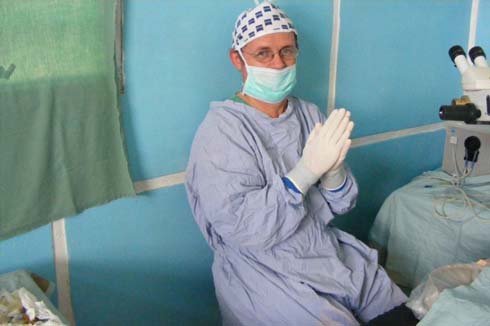
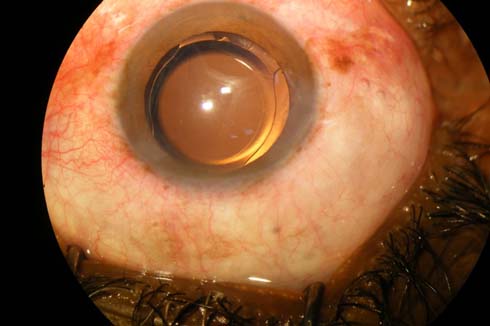
Lubunga’s residents welcome Richard Hardi and his team
We arrived in the remote little village of LUBUNGA, our destination for this year’s mission. The village is located on the border of an area of forest and savannah, 90 km from Mbuji Mayi. The region is highly prone to Onchocerciasis, which means that a large part of the population suffers from "river blindness" (as well).
We bough an excellent, large pirogue with an added engine and used it to visit the neighbouring villages to visit potentially operable immobile blind people.
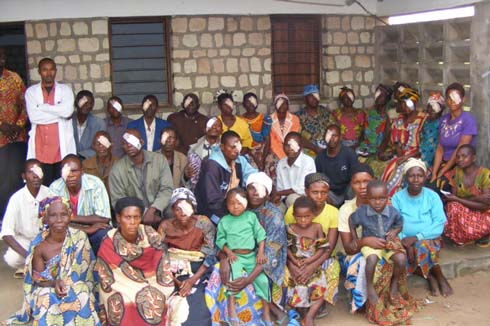
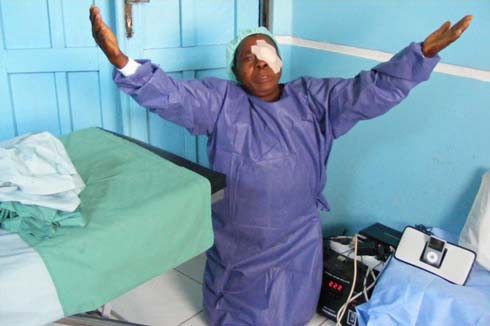
A lot of the patients came to be examined. During our 10 days of consultations we saw 1,150 patients. I made plans for a huge surgery program, but during the first day only a small number (15) showed up (instead of 25).
Many of the people were suspicious and decided: "Let's see what happens to the others, and then we’ll go".
Well, the good results had their effect, as during the rest of the surgery days we were inundated with patients. They came at random, completely ignoring the surgical program. That is how it happened that even on the last day, we operated on 26 patients...
„Hello Doc, how are you, well?”
„Thanks, I’m well, and you?”
„I’m very well, I can see excellently with my operated eye! When are we fixing the other one?”
„Well, the next time.”
„OK, then I’ll get ready for it. Thanks, and... congratulations!
Such little conversations gave us a fillip after out first operating day.
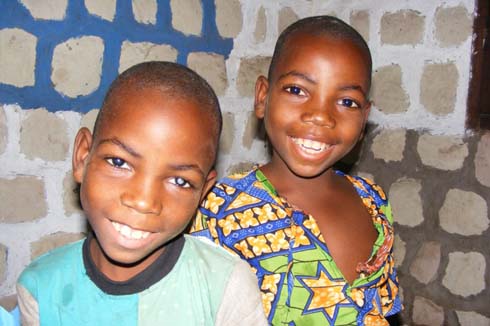
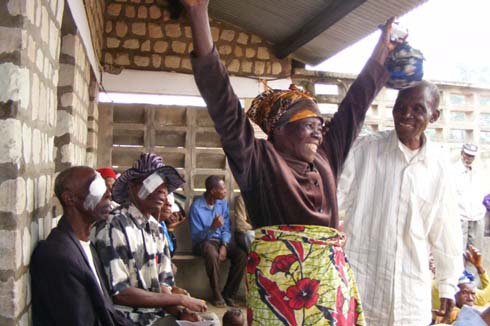
There was great amazement and joy! After the postop assessment some of them left dancing, in a triumphal procession: “I can see clearly now!”
If a patient insists on asking for surgery on the other eye, he must be truly satisfied!
Hey, I can see clearly now, hooray!!!
After the operation one old lady fell to her knees on the spot, and began a prayer of praise, in anticipation of a good result!
We too folded our hands and, together with her, praised the name of the Lord!
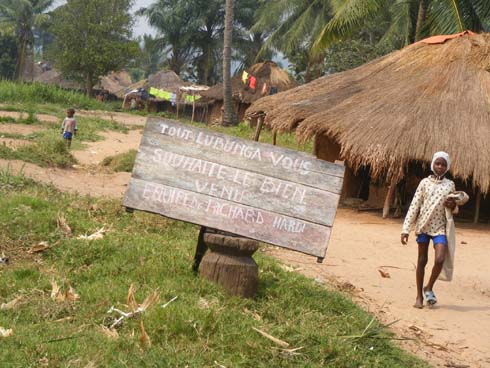
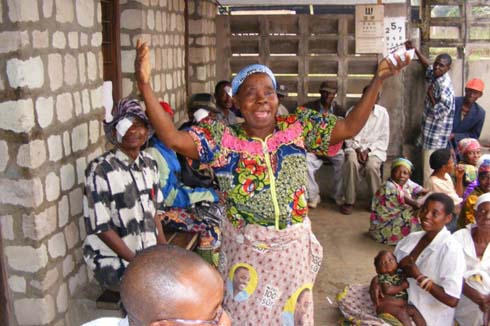
The same lady the next day after the bandage was removed…
We operated on 80% of the cataract patients, using the modern phacoemulsification procedure. The results were very good.
Post-phaco eye. Seamless tunnel incision, flexible intraocular lens... a highly convenient method even in the middle of the jungle... Or especially!
1150 examined patients:
124 operations
4 BIC ballpoint pens used up
17 days mission
As in the case of other missions, the Foundation's help was crucial for this one too. We took along a lot of medicine, eyeglasses and supplies needed for surgical procedures. Microscopes, Hungarian-made Medicontur intraocular lenses, even instruments for phacoemulsification and flexible lenses. The best quality and the most modern technology! ... as well as an electrical generator with fuel to run it.
FR Richard



